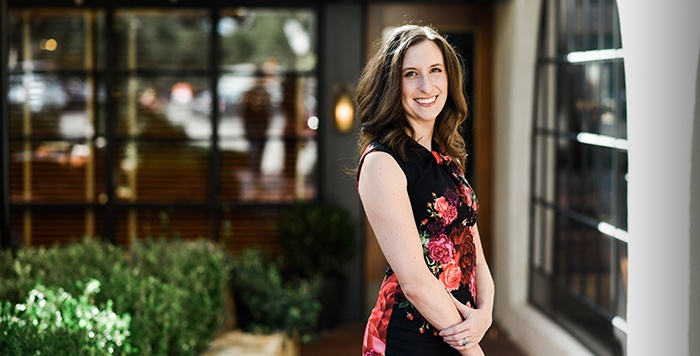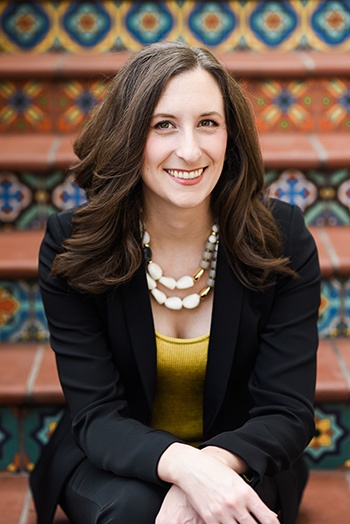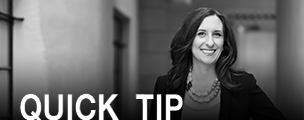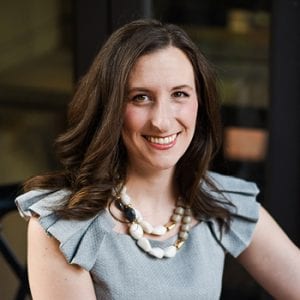Economic principles drive impactful financial planning
Economic principles drive impactful financial planning

Mary Lyons • Dallas, TX
The Wealth Woman
Read full biography below

I think our industry has had issues in approaching financial planning. The traditional industry model is that financial advisors usually either have heavy insurance backgrounds or are primarily interested in managing a client’s investments. Our process breaks down those distinctions, and we approach planning without bias toward what strategies or combination of strategies can be used to help clients achieve their objectives. Related to this issue, most of the financial planning in the past has been focused on either accumulation or distribution strategies.
We believe financial strategies need to be integrated throughout a client’s life. No financial product can provide a perfect solution, but the probabilities for success can be dramatically improved. Insurance and investments are both important parts of an overall plan—and when our clients understand these tools, they can learn how to use them in ways that most advisors don’t talk about.
 These are the types of concepts, among many others, that we educate our clients on during our planning process. The process typically takes four or five meetings with the client, with the first being a discovery session. They will hear about what we do, and then we will explore their objectives and what is important in terms of their life goals. I help people think through the problems and the opportunities they will likely face as they approach retirement planning and other important financial issues in their lives.
The second meeting is about how they might optimize their income and distribution rate in retirement. We look at various assumptions about retirement age, risk, and income distribution and assess what income their current plan might deliver. We then explore some of the opportunities for enhancing that income using various protection and income-producing strategies. That allows us to examine how different variables could be changed, such as retirement date, current savings, or retirement income levels. We use a methodology and software called Wealth Building Cornerstones during the process, which facilitates analysis of retirement-planning options.
At the third meeting, we look at customized recommendations for investment strategies. I focus on dynamic risk management for investment portfolios, educating clients about the sequence of returns and how significant drawdowns and volatility can derail their progress toward objectives. We think actively managed investment strategies that seek to mitigate risk can play an important role in client portfolios. We not only believe in diversification by asset class but also in diversification by strategy type and management style. We use professional third-party money managers who focus on the development of sophisticated strategies and the day-to-day management of portfolio strategies. We spend a good amount of time vetting these managers and understanding the capabilities of both their firms and their various strategies.
These are the types of concepts, among many others, that we educate our clients on during our planning process. The process typically takes four or five meetings with the client, with the first being a discovery session. They will hear about what we do, and then we will explore their objectives and what is important in terms of their life goals. I help people think through the problems and the opportunities they will likely face as they approach retirement planning and other important financial issues in their lives.
The second meeting is about how they might optimize their income and distribution rate in retirement. We look at various assumptions about retirement age, risk, and income distribution and assess what income their current plan might deliver. We then explore some of the opportunities for enhancing that income using various protection and income-producing strategies. That allows us to examine how different variables could be changed, such as retirement date, current savings, or retirement income levels. We use a methodology and software called Wealth Building Cornerstones during the process, which facilitates analysis of retirement-planning options.
At the third meeting, we look at customized recommendations for investment strategies. I focus on dynamic risk management for investment portfolios, educating clients about the sequence of returns and how significant drawdowns and volatility can derail their progress toward objectives. We think actively managed investment strategies that seek to mitigate risk can play an important role in client portfolios. We not only believe in diversification by asset class but also in diversification by strategy type and management style. We use professional third-party money managers who focus on the development of sophisticated strategies and the day-to-day management of portfolio strategies. We spend a good amount of time vetting these managers and understanding the capabilities of both their firms and their various strategies.

Business coaching takeaways for financial advisors
Mary Lyons, founder of The Wealth Woman and a managing director of Personal Economics Group, has found great value in working with a business coach. She has developed seven key principles from her coaching experience that she applies consistently in her practice:
- Build a process. Take your clients through the same process every time so that each of your clients has the same experience. If all your clients have the same experience, you become more referable.
- Measure everything. If you know your metrics, you can plan your revenue. If it takes 10 calls to get five appointments, and those lead to three applications, and those lead to one close, you know how many calls you need to close business. Measure the revenue for each close and how many calls are needed to hit revenue goals.
- Know your market. Look at your existing book of business and identify the common traits in the clients you love the most. Now focus on finding more of those.
- Make yourself valuable. Make introductions to other people who can help your clients personally and professionally. Your clients will appreciate it and so will the people you refer—which means more referrals for your practice.
- “Do it anyway.” Even when you are having a bad day, keep moving forward. Some days you may feel like a snail, but even a snail gets to look up and see how far he has come. Treat your practice as though you are a business owner. Everything ultimately comes back to you and your work ethic.
- Celebrate the victories. Acknowledge and celebrate your successes … but only for 24 hours. Then get back to work.
- Schedule vacation. A little time off does a world of good. You can’t accomplish great things running on fumes. Put vacation on your calendar like any other meeting.
 Mary Lyons is the founder of Wealth Woman Inc. and a managing director at Personal Economics Group (PEG). The Wealth Woman and PEG offer comprehensive financial products and service in the areas of financial planning, protection planning, wealth management, retirement and legacy planning, and charitable giving strategies.
Born in Galveston, Texas, Ms. Lyons lived in several Texas cities during her childhood years. Her father successfully developed different businesses and founded PEG. Ms. Lyons’ mother worked in a variety of positions, including at one time managing the accounting for her husband’s practice. Ms. Lyons says she was interested in many diverse areas in high school and was “a bit of a bookish person, an athlete, musician, writer/editor, artist, and captain of the debate team.”
Ms. Lyons was accepted into an interdisciplinary honors program at the University of Texas, graduating with a Bachelor of Arts degree in the program and a bachelor’s degree in journalism. She began her career as a mortgage broker, transitioned to work as a representative for a national insurance firm, and then became a financial advisor. She joined Personal Economics Group in 2008 and founded The Wealth Woman in 2017. She has been recognized within the industry with several awards and has presented at national conferences. Ms. Lyons is a board member of the Women’s Finance Exchange and founder of the Women’s Connection. Both promote networking and business and career development.
Ms. Lyons lives in Dallas with her husband and their young daughter and son. She attends Church of the Incarnation. She was named volunteer of the year for Vogel Alcove, a learning and developmental center for homeless children. She also devotes time to promoting various charities through the “Champions of Charity” podcast. Ms. Lyons is an accomplished artist and enjoys spending time with her family, reading, and crafting jewelry.
Disclosure: Registered representative and investment advisor representative of and securities offered through OneAmerica Securities Inc., a registered investment advisor, member FINRA, SIPC. Wealth Woman and Personal Economics Group are not affiliates of OneAmerica Securities or the companies of OneAmerica and are not broker-dealers or registered investment advisors.
Photography by Shannon Skloss
Mary Lyons is the founder of Wealth Woman Inc. and a managing director at Personal Economics Group (PEG). The Wealth Woman and PEG offer comprehensive financial products and service in the areas of financial planning, protection planning, wealth management, retirement and legacy planning, and charitable giving strategies.
Born in Galveston, Texas, Ms. Lyons lived in several Texas cities during her childhood years. Her father successfully developed different businesses and founded PEG. Ms. Lyons’ mother worked in a variety of positions, including at one time managing the accounting for her husband’s practice. Ms. Lyons says she was interested in many diverse areas in high school and was “a bit of a bookish person, an athlete, musician, writer/editor, artist, and captain of the debate team.”
Ms. Lyons was accepted into an interdisciplinary honors program at the University of Texas, graduating with a Bachelor of Arts degree in the program and a bachelor’s degree in journalism. She began her career as a mortgage broker, transitioned to work as a representative for a national insurance firm, and then became a financial advisor. She joined Personal Economics Group in 2008 and founded The Wealth Woman in 2017. She has been recognized within the industry with several awards and has presented at national conferences. Ms. Lyons is a board member of the Women’s Finance Exchange and founder of the Women’s Connection. Both promote networking and business and career development.
Ms. Lyons lives in Dallas with her husband and their young daughter and son. She attends Church of the Incarnation. She was named volunteer of the year for Vogel Alcove, a learning and developmental center for homeless children. She also devotes time to promoting various charities through the “Champions of Charity” podcast. Ms. Lyons is an accomplished artist and enjoys spending time with her family, reading, and crafting jewelry.
Disclosure: Registered representative and investment advisor representative of and securities offered through OneAmerica Securities Inc., a registered investment advisor, member FINRA, SIPC. Wealth Woman and Personal Economics Group are not affiliates of OneAmerica Securities or the companies of OneAmerica and are not broker-dealers or registered investment advisors.
Photography by Shannon Skloss

